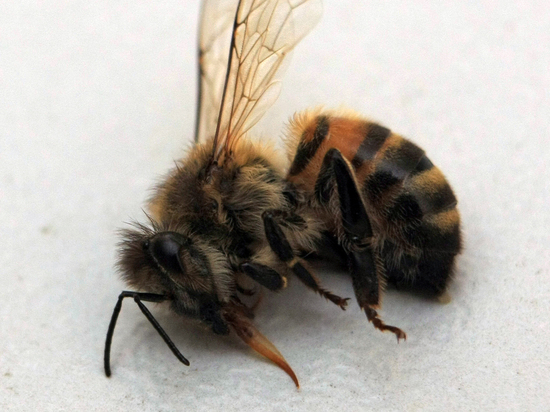Scientists have figured out how to euthanize bees without compromising health
[ad_1]

The cold will help.
A method for immobilizing honey bees Apis mellifera was invented by a group of scientists from the All-Russian Research Institute of Experimental Veterinary Medicine named after K.I. Skryabin and Ya.R. Kovalenko RAS. Recently, the development was protected by a patent of the Russian Federation.
As it became known to MK, the development was needed in order to study the anatomical features of insects without any problems. After all, buzzing hymenoptera can simply bite scientists. To date, there are two main ways to immobilize bees. In the first case, carbon dioxide acts as an anesthetic. At the same time, honey plants are placed in a chamber with a small concentration of CO2, and soon they fall into anabiosis. In addition, bees can be introduced into anabiosis using distilled water at a temperature of 15-30°C. Fertilized queens are placed in a container and kept there for 20-40 minutes. Unfortunately, the known methods have drawbacks: insects do not remain immobilized for long, and after being anesthetized with carbon dioxide, they behave aggressively and still tend to bite the experimenters. And if this is not very scary for the researcher, then the bees, having lost their sting, die.
Researchers have found a way to immobilize bees with cold. To begin with, 200-300 individuals are selected from the bee colony in a transparent plastic bag, then: the air is squeezed out of the bag, it is hermetically sealed and placed in a refrigerator, or a vessel with water at a temperature of 0 … + 4 ° C. First, the bees become numb, slowly sort through their paws and gradually fall into anabiosis. In summer, bees can stay in this state for 40-50 hours without harm to health, and in the autumn-winter period – 60-75 hours. During this time, you can examine each of the motionless bees, measure its segments and weigh or carry out other manipulations.
Scientists note that a long stay of insects in suspended animation allows you to study them for several days, putting them in the refrigerator for a time when they are not needed. To bring bees out of hibernation, they are placed in a transparent bag and inflated to a spherical state with air at a temperature of +14…+34 °C. The bees begin to come to life after 15-60 minutes, depending on how long they have been “sleeping”. Then the insects begin to move their antennae, limbs, move their abdomen, and when touched, they release a sting. An hour and a half after the revival of the bees are fed with honey. The bees come to life, become mobile, and they can be returned to the colony from which they were selected, used to strengthen a weak colony, or create a new one by releasing insects on warm frames with food.
[ad_2]
Source link








